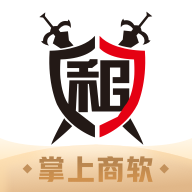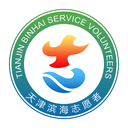How to Arrange in Chronological Order?
作者:佚名 来源:未知 时间:2024-11-26
在我们日常生活和工作中,经常需要按照时间顺序来整理和展示信息,无论是历史事件、技术发展还是个人经历。那么,如何用英文表达“按年代(时间)顺序排列”呢?本文将详细讲解这一表达方式的各个方面,确保内容通俗易懂,同时兼顾搜索引擎友好度。

一、基础表达
“按年代(时间)顺序排列”在英文中最直接的表达是 "in chronological order"。这个词组简洁明了,适用于各种正式和非正式场合。例如:
"Please list the events in chronological order." (请按时间顺序列出这些事件。)
"The book is organized in chronological order, starting from the early 20th century." (这本书按时间顺序编排,从20世纪初开始。)
二、同义词和短语
除了 "in chronological order" 之外,英文中还有其他几种表达方式,虽然可能不如前者常用,但在特定语境下同样有效。
1. "by date":强调按日期排列,适用于日程表、会议记录等。
"The documents are filed by date." (文件按日期归档。)
2. "in sequence of time":更加正式和书面化,强调时间的顺序性。
"The chapters are arranged in sequence of time." (章节按时间顺序排列。)
3. "in temporal order":使用了“temporal”这个较为专业的词汇,意为“时间的”。
"The events are presented in temporal order." (事件按时间顺序呈现。)
4. "from past to present" 或 "from the beginning to the end":适用于讲述历史或故事,强调从过去到现在的过程。
"The movie tells the story from past to present." (这部电影讲述了从过去到现在的故事。)
"Let's go through the project timeline from the beginning to the end." (让我们从头到尾过一遍项目的时间线。)
三、在不同语境中的应用
1. 学术研究:在撰写学术论文或研究报告时,经常需要按照时间顺序来组织内容。
"The literature review is structured in chronological order, covering key developments from the 19th century to the present day." (文献综述按时间顺序编排,涵盖了从19世纪到今天的关键发展。)
2. 历史事件:在讲述历史事件时,时间顺序至关重要。
"The history book traces the evolution of the country's political system in chronological order." (这本历史书按时间顺序追溯了该国政治制度的演变。)
3. 项目规划:在项目管理中,时间线或甘特图通常按时间顺序展示任务进度。
"The project plan is laid out in chronological order, with each milestone clearly marked." (项目计划按时间顺序制定,每个里程碑都明确标注。)
4. 个人经历:在撰写自传或简历时,按时间顺序呈现个人经历是常见的做法。
"My resume lists my work experience in chronological order, starting with my first job." (我的简历按时间顺序列出了我的工作经历,从第一份工作开始。)
5. 技术发展历程:在科技领域,按时间顺序梳理技术的发展脉络有助于理解其演变过程。
"The exhibit traces the evolution of smartphones in chronological order, from the first models to the latest flagships." (展览按时间顺序展示了智能手机的演变过程,从最初的型号到最新的旗舰产品。)
四、注意事项
1. 一致性:一旦决定按时间顺序排列信息,请保持一致性,不要在中途打乱顺序。
2. 明确起始点:在开始时明确指出时间范围或起始点,有助于读者更好地理解后续内容。
3. 使用时间标记:在每个时间点或时间段前加上明确的标记(如年份、月份、日期等),有助于读者跟踪时间线。
4. 避免重复:如果信息在时间上有重叠或重复,请进行合并或精简,以避免混淆。
5. 灵活性:虽然时间顺序是一种有效的组织方式,但在某些情况下(如需要突出特定主题或对比不同时间点的情况时),也可以考虑其他组织方式。
五、实际应用示例
假设你正在撰写一篇关于20世纪音乐发展的文章,你可以这样开头:
"This article explores the evolution of music in the 20th century, organized in chronological order. Starting with the early 1900s, we will trace the development of various musical genres, from classical and jazz to rock and pop. Each section will be marked by a specific decade, highlighting key artists, compositions, and technological innovations that shaped the era."
(这篇文章探讨了20世纪音乐的演变过程,按时间顺序编排。从20世纪初开始,我们将追溯各种音乐流派的发展,从古典音乐和爵士乐到摇滚和流行音乐。每个部分都将以特定的十年为标记,重点介绍塑造时代的关键艺术家、作品和技术创新。)
通过这样的开头,读者可以清晰地了解文章的结构和主要内容,从而更容易地跟随你的思路进行阅读。
结语
“按年代(时间)顺序排列”在英文中可以通过多种方式表达,其中 "in chronological order" 是最直接且常用的。根据不同的语境和需要,你还可以选择其他同义词和短语来丰富你的表达。掌握这些表达方式不仅有助于提升你的英文水平,还能使你的内容更加清晰易懂。希望本文对你有所帮助!
- 上一篇: 揭秘:普崔塞德教授究竟是何方神圣?
- 下一篇: iPad 3:万众期待的发布日期何时揭晓?







































